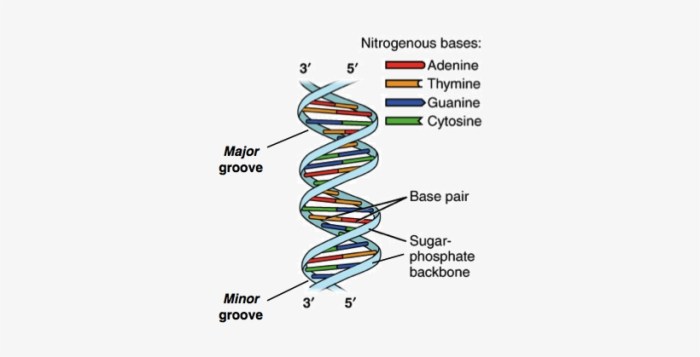Phases of matter bill nye – Bill Nye’s Phases of Matter: An engaging exploration into the fundamental states of existence, from solids to plasmas. Join us as we delve into the unique properties, transitions, and applications of matter, guided by the renowned science educator himself.
From the everyday wonders of melting ice to the cosmic marvels of stellar plasmas, the phases of matter shape our world in countless ways. Let’s embark on a journey to unravel their mysteries and discover the fascinating science behind them.
Define the Phases of Matter: Phases Of Matter Bill Nye

The phases of matter refer to the distinct states that matter can exist in, each with its own unique properties and characteristics. These phases are solid, liquid, gas, and plasma.
Solids
Solids have a definite shape and volume. The particles in solids are closely packed together, forming a rigid structure. Solids can only change shape if they are subjected to a force, such as cutting or breaking.
Liquids
Liquids have a definite volume but no definite shape. The particles in liquids are loosely packed together, allowing them to flow and take the shape of their container. Liquids can be poured or pumped from one container to another.
Gases
Gases have no definite shape or volume. The particles in gases are very far apart and move freely in all directions. Gases can expand to fill their container and can be compressed into a smaller volume.
Plasma
Plasma is a superheated gas that contains ionized particles. The particles in plasma are so energetic that they have broken free from their atoms, creating a soup of charged particles. Plasma is often found in stars and other high-energy environments.
Bill Nye’s engaging explanation of the phases of matter has always been a captivating subject for me. However, I recently stumbled upon a challenging Abeka Algebra 2 Quiz 17 , which momentarily diverted my attention. Nevertheless, the allure of Bill Nye’s scientific explorations quickly drew me back to the fascinating world of matter and its transformations.
Illustrate Phase Transitions
Phase transitions are physical changes that occur when a substance changes from one phase to another, such as from solid to liquid or from liquid to gas. These changes involve the rearrangement of molecules within the substance, resulting in different physical properties.Phase
transitions can occur when a substance is subjected to changes in temperature, pressure, or both. For example, ice (solid water) melts into liquid water when heated, and liquid water boils into water vapor (gas) when heated further. Similarly, water vapor condenses into liquid water when cooled, and liquid water freezes into ice when cooled further.
Types of Phase Transitions
There are various types of phase transitions, each characterized by a specific energy change. The following table summarizes the common types of phase transitions and their corresponding energy changes:
| Phase Transition | Energy Change |
|---|---|
| Solid to Liquid (Melting) | Endothermic (heat is absorbed) |
| Liquid to Gas (Boiling) | Endothermic (heat is absorbed) |
| Gas to Liquid (Condensation) | Exothermic (heat is released) |
| Liquid to Solid (Freezing) | Exothermic (heat is released) |
| Solid to Gas (Sublimation) | Endothermic (heat is absorbed) |
| Gas to Solid (Deposition) | Exothermic (heat is released) |
Describe Bill Nye’s Contributions

Bill Nye, renowned for his engaging and accessible science communication, has played a pivotal role in educating the public about the phases of matter.
Impact on Scientific Literacy
Nye’s captivating presentations and engaging experiments have ignited interest in science among diverse audiences, fostering a deeper understanding of the fundamental concepts of matter.
His work has empowered individuals with the knowledge and tools to comprehend complex scientific phenomena, bridging the gap between scientific research and public understanding.
Experiments and Demonstrations
Nye’s approach to teaching science emphasizes hands-on experiments and interactive demonstrations that vividly illustrate the properties and transitions between different phases of matter.
For instance, in one of his experiments, Nye demonstrates the transition from liquid to gas by boiling water and capturing the steam in a balloon, visually showcasing the transformation of water from a liquid to a gaseous state.
Explain the Applications of Phase Changes
Phase changes play a vital role in numerous technological advancements and everyday processes. These transformations are harnessed for various purposes, including cooling, heating, manufacturing, and energy production.
Cooling and Refrigeration
Phase changes are crucial in cooling systems, such as refrigerators and air conditioners. In refrigerators, the refrigerant undergoes a phase change from liquid to gas, absorbing heat from the interior and releasing it outside. This process effectively removes heat from the enclosed space, keeping food and beverages cool.
Heating and Energy Production
Phase changes are also utilized in heating systems. For instance, in heat pumps, a refrigerant undergoes a phase change from gas to liquid, releasing heat into the desired space. Similarly, in power plants, steam turbines convert the energy stored in steam (a gas) into mechanical energy as it undergoes a phase change to liquid (water).
Manufacturing and Materials Processing, Phases of matter bill nye
Phase changes find applications in manufacturing processes. For example, in metal casting, molten metal (a liquid) is poured into a mold and allowed to solidify (a solid). This process creates various metal components used in industries and everyday objects. Additionally, phase changes are employed in the production of polymers, pharmaceuticals, and other materials.
Other Applications
Beyond cooling, heating, and manufacturing, phase changes have numerous other applications:
- Fire extinguishers:Dry chemical fire extinguishers contain a powder that undergoes a phase change to a gas, smothering the fire.
- Dehumidifiers:These devices remove moisture from the air by condensing water vapor (a gas) into liquid water.
- Ice making:Freezing water (a liquid) into ice (a solid) is a common household application.
- Biological processes:Phase changes play a crucial role in biological systems, such as the melting of ice in the Arctic and the freezing of water in plant cells during winter.
Discuss the Future of Phase Matter Research
Phase matter research is a rapidly evolving field with the potential to revolutionize various scientific and technological domains. Current research focuses on exploring exotic phases of matter, such as topological insulators, superfluids, and quantum spin liquids, which exhibit unique properties that could lead to groundbreaking applications.
Emerging Technologies and Advancements
Advancements in experimental techniques, such as ultra-low temperature experiments and high-energy particle accelerators, have enabled the discovery and study of novel phases of matter. Computational modeling and simulations play a crucial role in understanding the complex behavior of these phases and predicting their properties.
Future Applications and Discoveries
The future of phase matter research holds immense promise for technological advancements and scientific discoveries. Potential applications include:
- Quantum Computing:Exotic phases of matter, such as topological insulators, could revolutionize quantum computing by providing new materials for qubits with enhanced stability and coherence.
- Superconductivity at Higher Temperatures:Discovering new superconducting materials that operate at higher temperatures could lead to energy-efficient power transmission and storage systems.
- Magnetic Levitation:Novel magnetic phases could enable the development of frictionless magnetic levitation systems for transportation and other applications.
- Exotic States of Matter:Ongoing research aims to uncover even more exotic states of matter, such as time crystals and axion insulators, which could challenge our understanding of fundamental physics.
The future of phase matter research is filled with exciting possibilities and the potential to transform our understanding of matter and its applications. Continued exploration and innovation in this field will undoubtedly lead to groundbreaking discoveries and technological advancements that will shape the future of science and technology.
Essential FAQs
What are the four main phases of matter?
Solid, liquid, gas, and plasma
How do phase transitions occur?
When a substance absorbs or releases energy, causing it to change from one phase to another
What is Bill Nye’s role in educating the public about the phases of matter?
He has created educational videos, conducted experiments, and written books that make complex scientific concepts accessible to a wide audience

